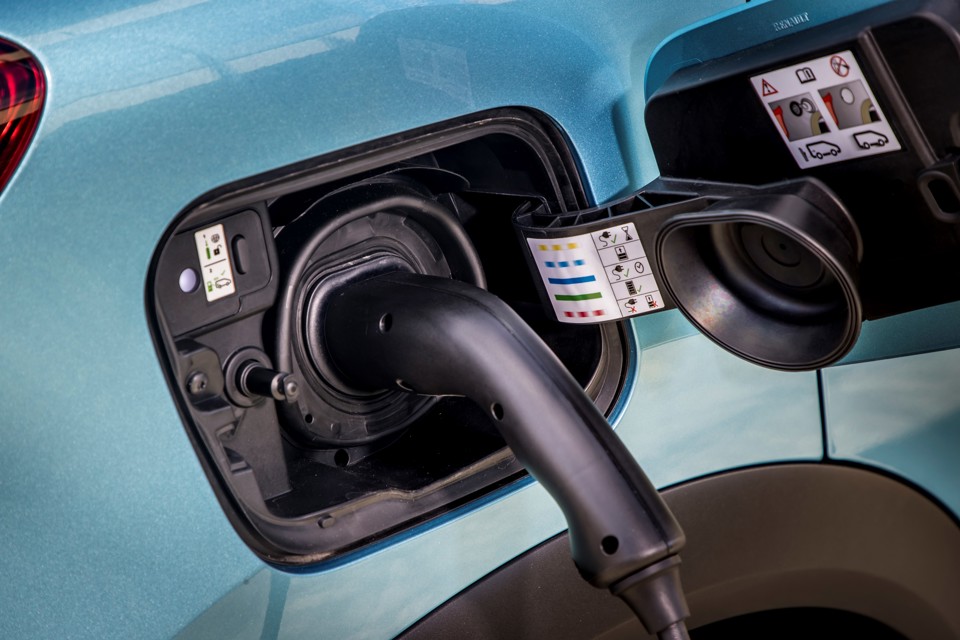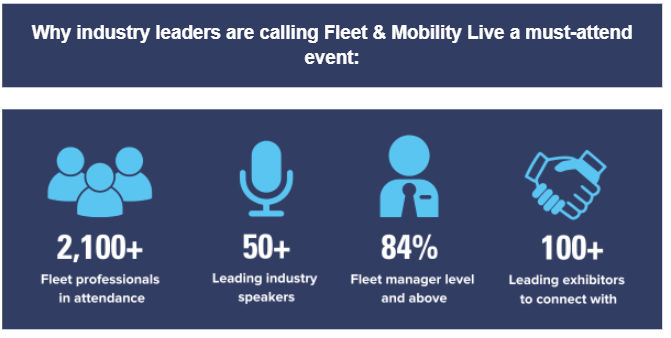The company car market is alive and kicking, despite the latest HMRC statistics which show 70,000 fewer drivers – an 8% year-on-year decline.
The new provisional data, published by the Government in July, shows that there were 800,000 employees paying benefit-in-kind (BIK) tax in 2019/20.
The number of company cars has now fallen each year since 2015/16, when HMRC reported that 960,000 employees were receiving the benefit. In 2016/17, the company car parc fell to 940,000, before dropping to 900,000 vehicles in 2017/18 and 870,000 in 2018/19.
However, despite HMRC figures suggesting a benefit on the wane, the fleet leasing industry is reporting a growing, ultra-low emission company car parc, with plug-in vehicles being adopted in record numbers.
Hitachi Capital Vehicle Solutions suggests that interest is increasing at such a rate, thanks, in part, to the resurgence of salary sacrifice (sal/sac), the number of employees paying BIK on a company car could exceed one million by 2023/24 (see opinion).
Zenith says orders have increased as the wider economy reopens, with year-on-year total car orders almost doubling in June, as drivers continue to be attracted to significant tax savings offered by company car and sal/sac car schemes.
Jon Smith, relationship director at Zenith, told Fleet News: “It is clear company cars, whether that’s a salary sacrifice car scheme or a traditional company car scheme, have once again become an extremely cost-effective way for companies to provide mobility for their employees in a way that the same vehicle, leased privately via a cash allowance, cannot.”
WLTP-FUELLED DECLINE
The decline in company car drivers reflected in the latest available BIK statistics is not surprising, given the confusion over future tax rates at the time.
Fleets and company car drivers were reporting increases in CO2 emissions of up to 30% due to the Worldwide harmonised Light vehicle Test Procedure (WLTP), which was introduced by the EU to better align reported CO2 emissions measured in the laboratory with those achieved during real-world driving conditions.
WLTP testing had been required for all new models from September 2017, and all new car registrations since September 2018, with the new measure being adopted for company car tax and vehicle excise duty (VED) from April 2020.
However, with a lack of clarity over how HMRC would compensate for the CO2 increase in the tax tables, if at all, many company car drivers opted for a cash alternative.
“After WLTP tests became mandatory to assess vehicle CO2 emissions, we saw a trend of employers moving away from company car schemes and providing cash allowances for employees to take out their own PCH or PCP leases,” explained Matt Walters, head of consultancy services and customer value at LeasePlan UK.
“Now, though, we’re expecting the company car market to grow alongside the electric vehicle (EV) market, especially as employers and employees alike have a better understanding of the savings available through EV salary sacrifice.”
It was the Government’s response to its review of WLTP and vehicle taxes in the summer of 2019, which saw previously published BIK rates for 2020/21 being binned.
The new rates it introduced instead included a new zero BIK percentage rate for pure EVs. It currently stands at 1% and will stay low, at 2%, up to April 2025.
Chris Chandler, principal consult ant at Lex Autolease, says it has been “really positive” to have the greatly reduced rates for ultra-low emission vehicles (ULEVs).
From June 2019 to December 2020, the number of battery electric vehicles (BEVs) on Lex Autolease’s funded fleet increased by more than 325%. It has risen a further 60% in the past eight months.
“We are seeing a dramatic increase (in BEVs),” said Chandler. “The two key subjects when talking to customers at the moment are the transition to EVs and salary sacrifice.”
These are being driven, in part, by sustainability agendas impacting fleet policies. “It’s also a very compelling argument to say to an employee that their BIK is 1% this year and will be 2% next,” he said.
SAL/SAC DEMAND
With the announcement of new BIK tax rates and the increasing availability of cheaper EVs, from more manufacturers and with longer driving ranges, Smith says employees have realised how “competitively priced and practical” a plug-in vehicle could be through company car and sal/sac schemes.
More than two-thirds (69%) of the company cars Zenith ordered during the past financial year were pure electric or hybrid.
Comparing company car orders at Zenith from 2019/20, before the new BIK rates were introduced, with its order book for 2020/21, there was a 19% increase in the proportion of BEVs being ordered and a 19% reduction in the number of diesels. Petrol orders fell by 9%.
Smith told Fleet News: “Within salary sacrifice, the change is even greater, with 77% of all vehicles ordered in the 2021 tax year being electric or a form of hybrid.”
He added: “Compared with the costs of leasing the same vehicle privately, salary sacrifice taxation benefits mean drivers can achieve a much lower cost of motoring.
“Typically, these can be between 30% and 50% dependent on the EV chosen, the employee’s personal circumstances and the employer’s sal/sac set up.”
According to the 2021 Arval Mobility Observatory Barometer, low tax rates on EVs have resulted in an increase – now 53% compared with 39% in 2020 – in employers offering sal/sac to non-company car drivers.
Shaun Sadlier, head of Arval Mobility Observatory in the UK, believes that interest in salary sacrifice could accelerate further in the coming years. “What we are seeing emerge is a definite future mobility role for EV-based salary sacrifice as a key element in a wave of new benefit initiatives that are designed to bring innovative options and ideas into play for employees, with only a very limited investment required by their employer,” he said.
Lex Autolease has seen growing interest in its sal/sac scheme. “We’ve had really strong demand,” said Chandler. “Obviously, time will tell with regard to numbers, but there’s certainly a lot of interest and it’s a strong part of our offering.
“When you look at the fleet market and the automotive market in general, it’s this flexibility, the offering of multiple channels, that’s developing.
“The low BIK on EVs makes salary sacrifice a very attractive proposition to non-company car drivers and that’s the main focus for us.”
AVERAGE EMISSIONS IMPACT
As fleets increasingly electrify company car fleets, inevitably cutting average emissions in future years, the impact of WLTP on CO2 temporarily halted that downward trend, according to the statistics from HMRC.
In 2002/03, when the current system of company car taxation was introduced, more than half (58%) of company cars reported emissions in excess of 165g/km.
By 2010/11, it had fallen to one-in-five company cars (19%) and in 2019/20, provisional figures suggest it was just 1%.
At the other end of the scale, HMRC reported no company cars emitting less than 75g/km in 2010/11, while the new data shows this had increased to 70,000 in 2019/20, up 10,000 on the previous year.
However, the growth in ultra-low emission vehicles (ULEVs), prior to the introduction of new BIK tax tables, was not enough for average emissions to fall again for the eighth consecutive year.
Between 2010/11 and 2018/19, average CO2 emissions fell steadily from 147g/km to 110g/km, but HMRC’s provisional figures for 2019/20 show that this has risen slightly to 111g/km.
HMRC says the increase may have been down to the impact of WLTP and NEDC-correlated figures being used to measure CO2. As the proportion of plug-in vehicles increases, however, the impact of WLTP is expected to diminish, with average emissions falling again.
New figures from the British Vehicle Rental and Leasing Association (BVRLA), for example, show average company car emissions of 98g/km in Q1 of this year, while new company cars registered in the quarter averaged emissions of just 70g/km. Cars obtained on personal leasing have significantly higher emissions, it said, as they are not subject to the same incentives, with CO2 from new additions to the PCH fleet averaging 120g/km.
Furthermore, it says fleets are funding record numbers of EVs, with plug-in cars accounting for around one-third of orders during Q1 2021.
In total, 47% of new vehicle orders during the quarter were for plug-in or hybrid vehicles, with 19% for pure electric variants, three percentage points more than diesel.
The latest figures from HMRC show that the proportion of diesel company cars in 2019/20 was 61%, down from 82% in 2014/15. Across the BVRLA fleet, BEVs and plug-in hybrids now account for 13% of cars.
























Login to comment
Comments
No comments have been made yet.